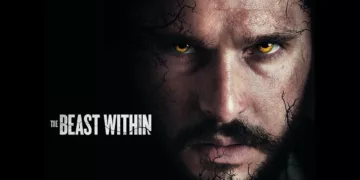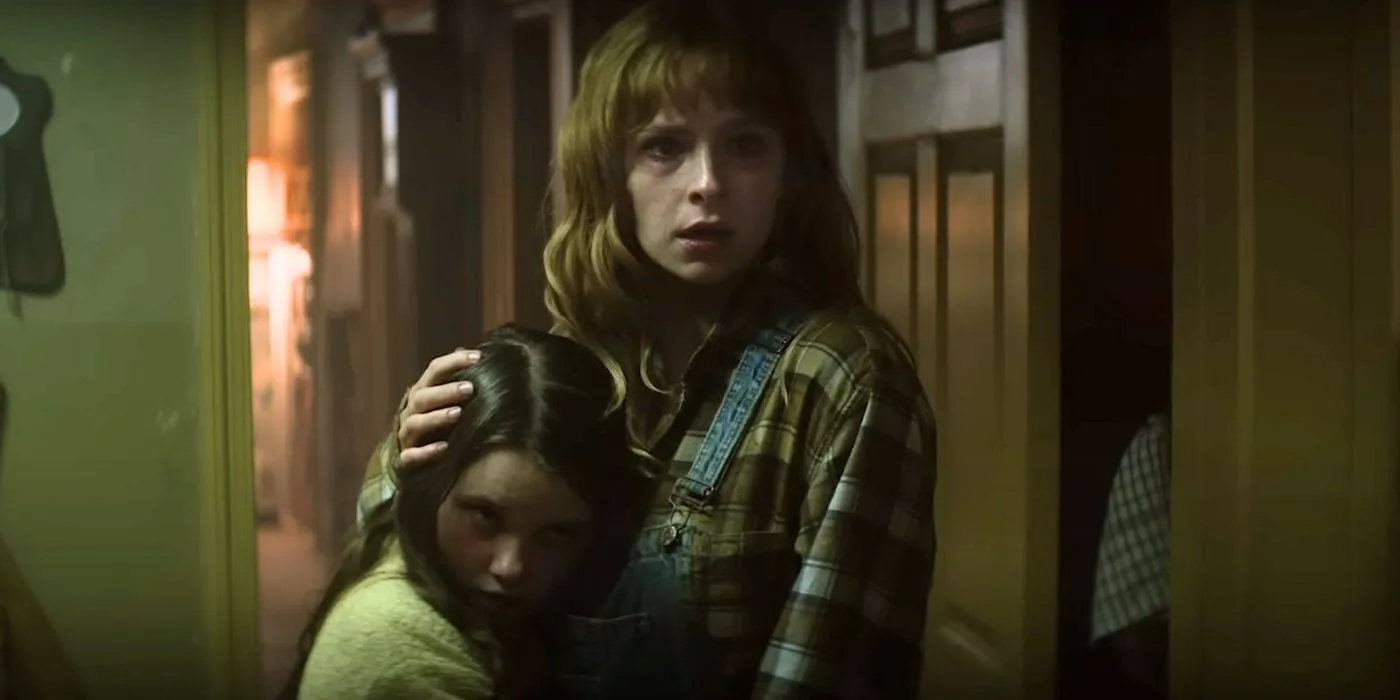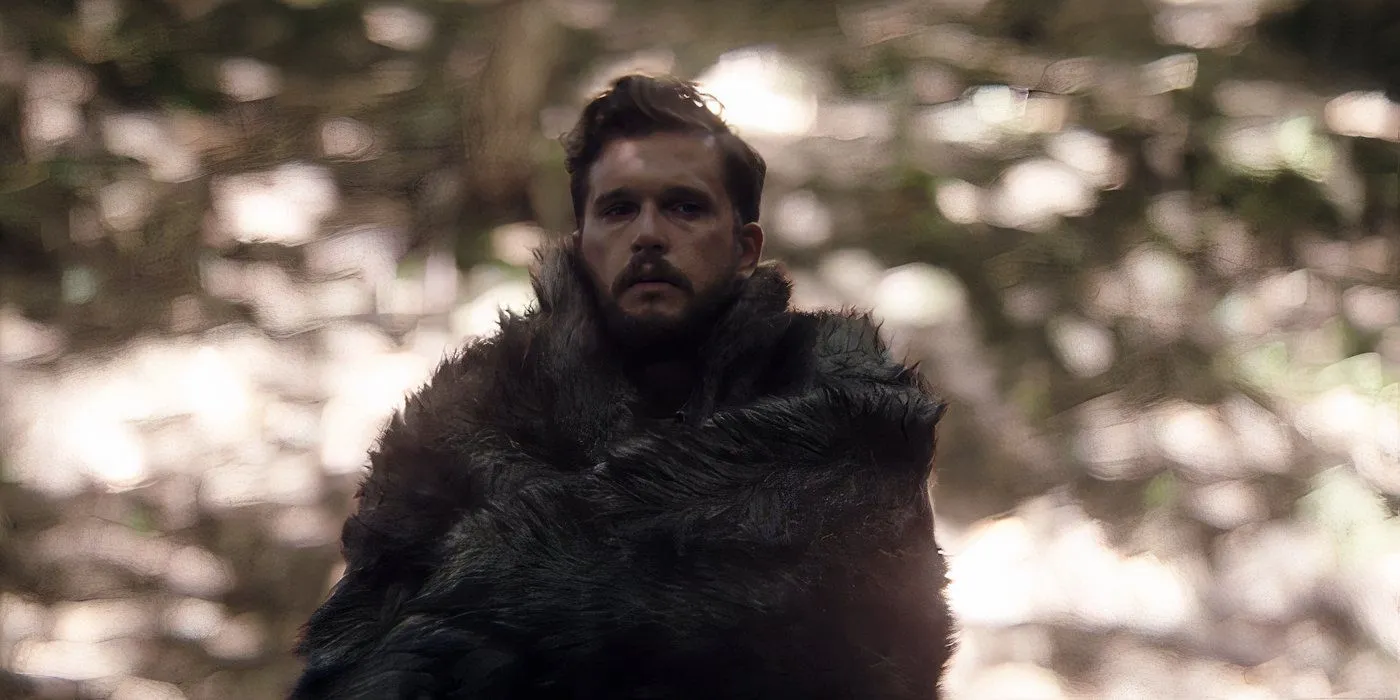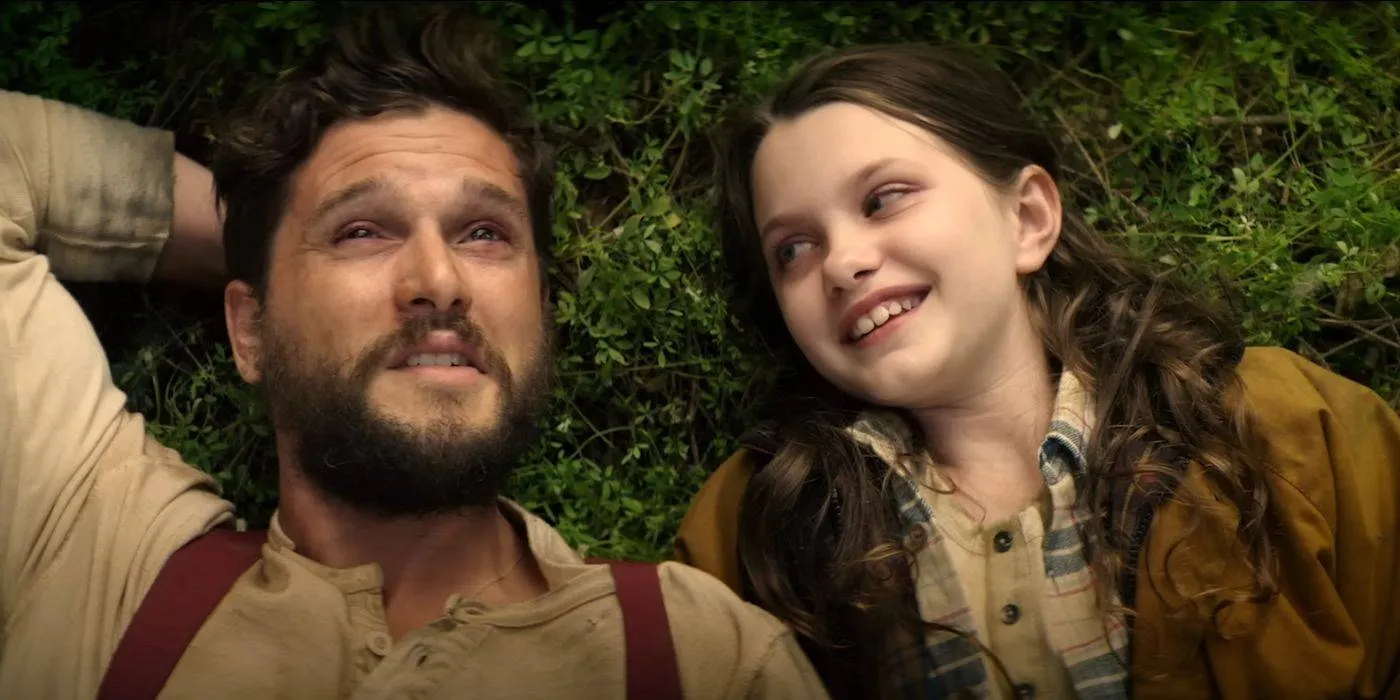Set on a remote pig farm in rural Scotland, The Beast Within tells the surreal story of 10-year-old Willow and her family’s dark transformation secret. Director Alexander J. Farrell crafts his directorial debut within the horror genre, hoping to share thoughtful themes through subtle frights.
Willow witnesses strange events each full moon as her father is taken into the deep woods. Game of Thrones’ Kit Harrington plays gentle but volatile patriarch William, battling inner forces even he can’t understand.
Willow senses the adults are hiding vital truths, overhearing whispers of “change” and the unspoken. Through her young perspective, we experience escalating oddities, from her dad’s bloody return each dawn to the grand country manor’s decaying isolation.
Willow proves wise beyond her years, left to decode the family’s dysfunction alone. As clues mount, Farrell ramps up tension through dreamlike visuals and a delicate score. When Willow Risk follows her parents one moonlit night, the “scales fall” as this modern fairytale’s real-world terrors are revealed.
An Unwelcoming Home
The isolated setting of The Beast Within plays a big role. We’re introduced to a remote farmhouse deep in rural Scotland, surrounded by endless forests and hills. Right away, the house gives off an unwelcoming vibe. It’s run-down, with broken windows, peeling paint, and creaky floors. Outdoor chores like chopping wood seem the only way to pass time in this gloomy location.
The inside isn’t much better. Dark colors and shadows dominate everywhere. It’s like life has been sucked out of the place. But two things catch your eye: a grand velvet throne and a massive portrait of the family. They scream of desperation to cling to their former status, even as the house crumbles around them. No wonder tensions stir within these walls.
The symbolism of the home’s state reflects turmoil in the family. You get a sense of their declining grip on normalcy. Then there’s Noah, who sees himself as lord of this decaying manor. His delusions of power contrast with the true lack of control he possesses. When danger nears each full moon, the mansion must feel like a suffocating cage for trapped souls within.
Production design immerses you in the family’s gloomy isolation. Each creaky floorboard and broken pane adds to the unsettling atmosphere, leaving the characters and viewers feeling trapped and on edge. It’s a perfectly damaged setting for this twisted tale of cursed souls fighting to cling to life’s simpler routines, even as darkness works to shatter their fragile stability.
Perceptions of Protection
A key part of The Beast Within is understanding events through young Willow. She lives with a breathing condition requiring an oxygen tank. Yet this girl exhibits wisdom beyond her years. While parents Noah and Imogen shelter her from the family’s “truth,” Willow senses they’re keeping damaging secrets.
Noah plays the kind father, but hints of volatility lurk below. When chopping wood, his anger threatens to explode. As the family’s “beast” emerges each full moon, so too does Noah’s primal rage. Only Imogen and chained ruins contain it. She desperately tries shielding Willow, not realizing her protection does more harm.
Imogen’s goal is noble: safeguarding innocent Willow. But secrets always surface. By blocking the truth, Imogen paradoxically endangers her daughter. When dangers are nameless boogeymen, fear grows larger than reality. Willow must decode the turmoil alone, based on disturbing clues no child should see—her father’s brutal returns each dawn.
Her maturity aids the quest, though vulnerability remains. Willow understands more than adults think, like whispered arguments about “change.” Still, the horror of finally learning her dad’s secret must break even the strongest spirit. Where parents failed, this crisis forced untimely growth.
These layered characters anchor the unsettling atmosphere. Questions emerge as perceptions shift. In a world where monsters lurk outside and within, can any embrace feel secure when built on evasion rather than truth? The Beast Within uncovers much about protection’s double-edges through Willow’s penetrating yet innocent eyes.
Hidden Demons
Under its surface folk horror trappings, The Beast Within explores profound real-world themes. Noah’s curse represents how trauma stays with us, with manifestations changing each lunar cycle. No matter Imogen’s protection, demons always emerge when least expected.
Some view the film as portraying struggles with addiction or mental illness. Noah wants nothing more than normalcy, yet each full moon draws out primal wrath he can’t control. Like these invisible illnesses, the curse unravels his family by degrees. Imogen and Willow witness pain but can’t comprehend its source.
No matter their devotion, loved ones can’t cure what ails Noah, just as family endures helplessness around addiction. Good intentions often do harm by shielding them from reality. The film suggests protection’s limits—some demons must be named before conquering their power.
When Willow discovers the truth, that moment shatters illusions but allows understanding. Facing horrors empowers over mysterious fears. Ultimately, this family can only heal by accepting Noah fully, curse included, instead of living divided between who he is and isn’t.
The Beast Within implies building lives around deep wounds, dooming them to fracture whenever darkness rears again. Only by acknowledging hard realities, as Willow does, can light penetrate where demons thrive. There may be no cure, but the full moon need not rule their world once secrets come to light.
Masters of Atmosphere
Farrell’s subtle direction makes The Beast Within a tense slow-burner. There’s no flashy camera work or bombastic score, just thoughtful pacing that immerses you in this haunting world. The rhythm of Noah’s monthly lockups ties horrors to real-life dread in a masterful way.
Daniel Katz’s cinematography is just as atmospheric. Through soft focus, he casts a dreamlike veil over family life, seen through Willow’s eyes. Yet this same lens captures visceral tension, like when Noah’s latent violence almost erupts during woodchopping. Every glance holds provocation and threat, all the more unsettling for the unseen.
Viewers are left to conjure monstrosities from mounting stress alone. Scenes switching between Willow’s vulnerability and Noah’s struggles extract high drama from simple framing. We feel panic through her eyes and rage through his subtle twitches, drawn ever deeper into this cursed family’s heart. Locations like the decaying manor and ruined cell become venues for mysteries that stir imagination more than any gore could.
Directors who do not command attention through shocks alone understand true horror. Farrell and Katz let this tale unfold at a maddening pace, every detail compounding dread until nerves felt shredded. Their mastery leaves lasting impressions where frantic camerawork meets only fleeting frights. In The Beast Within, the atmosphere is the real star.
Masterful Method Acting
Caoilinn Springall does a terrific job as Willow, carrying us along her journey of discovery. Facing family secrets no child should, she makes pure innocence somehow watchable. But it’s Kit Harrington’s Nicholas who sets this film apart.
Without showy transformations, he builds terror through subtlety alone. Harrington understands that violence lurks in the calmest people and lets it seep from their pores. Each full moon, dread mounts as we feel forces stirring beyond Nicholas’ control. When woodchopping brings a beast closer, restraint snaps like a twig. Yet his gaze alone spills ferocity.
It’s a mesmerizing display of method acting. Harrington inhabits both man and monster, blurring lines as one feeds the other. We ache for Nicholas’ plight even as his hair stands on end. He makes a curse we’d call a blessing, deftly portraying war within. No shock make-up required—this actor makes monstrosity a state of mind.
Director Farrell deserves praise for coaxing such displays from his cast. But it’s Harrington’s fearless emotional acrobatics that provide the film’s pulse. Through him, we live cursed lives, where the slightest trespass scares humanity away. This is a tour de force that, once seen, could never be forgotten. For immersing so wholly as both man and beast, the performance is nothing short of masterful.
Moving in Murky Waters
The Beast Within delivers a moody slow-burn in the best way. Wrapped in Farrell’s atmospheric folk horror trappings lies a gripping family drama as a cursed man struggles against tides rising each full moon.
Harrington and Springall keep us hooked with nuanced performances that say much through gesture alone. Their bond and family fracturing around beasts within and without keeps intriguing to the bleak end. While some crave shocks, this film satisfies differently.
Farrell guides us deftly through murky narrative waters, letting imagination fill gaps more than any visual could. From ruined manors to ancient wood, his creative rhythms engulf us in a world as compelling as it is unsettling.
For those desiring subtle chills and tense character studies over bombast, this moody movie delivers. While some find it too slow, patience pays in rich rewards. I predict streaming genre fans will delight in its spellbinding hold. So venture within if haunting mysteries intrigue over obvious answers—this one lingers long after lights return.
The Review
The Beast Within
The Beast Within proves a subtle slow-burner can be every bit as unnerving as an outright shocker. Farrell's atmospheric direction and committed central performances kept this reviewer thoroughly gripped throughout its murky, ambiguous tale. While not for those seeking pulse-pounding scares, the film succeeds in drawing viewers deep into its family's haunting dilemma. For fans of psychological dread building to bleak revelations, I have little doubt The Beast Within will satisfy.
PROS
- Atmospheric folk horror style and setting
- The tense, unsettling tone of growing dread
- Nuanced performances that leave an impact
- Thoughtfully paced, slow-burn storytelling
- Lingering dread and mystery over shock value
CONS
- It may be too subtle and ambiguous for some.
- A slow pace won't appeal to all audiences.
- An open-ended and bleak conclusion isn't definitive.
- Potentially not enough narrative substance
- Characters could be more fully developed.






















































Discussion about this post